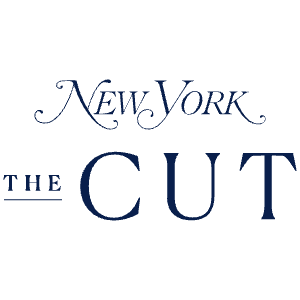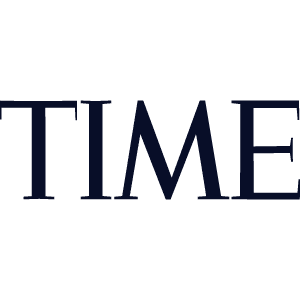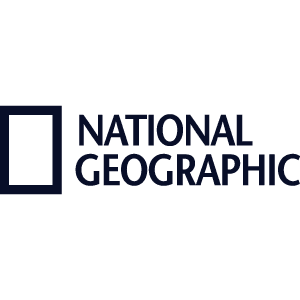Our Mission
Storytelling for Nature Protection
We are a community of scientists, storytellers, journalists and filmmakers who are dedicated to the wild, and specifically the Great African Seaforest.
We advocate for the healing of our planet by connecting people to nature through our science-based immersive storytelling.
“I need no convincing that an ecosystem such as this is of inestimable value & must be protected.”
SIR DAVID ATTENBOROUGH
Our Projects
Inspired by Nature
Supported by Science
Guided by Indigenous Wisdom
All our work is based on our connection to the Great African Seaforest. This underwater forest is a deep source of inspiration for our minds, souls and hearts. By sharing these experiences with the world, we hope to inspire a global movement of nature connection and more stories about the intrinsic relationship between humans and the living planet.
Films
World-class films are an integral part of our content. We tell immersive, personal stories about people and nature, to a global audience. Our films include the Netflix Original My Octopus Teacher; Older than Trees – a film about the future of sharks and rays, and our newest feature documentary on a very special pangolin, will launch on Netflix in April ‘25.
Books
Our Sea Change book has been republished as Underwater Wild, and we released a children’s book, A Journey Under the Sea. Craig Foster’s new book Amphibious Soul about “Finding the wild in a tame world,” based on his own ‘rewilding,’ is available to purchase.
Exhibitions
Sea Change Project collaborates on multimedia exhibitions that convey the story of our interconnectedness with the natural world. Showcasing the latest research on the origins of Homo sapiens while raising awareness for the Great African Seaforest and kelp forests worldwide. Visit the Origins exhibit in Cape Town and De Hoop Nature Reserve.
Education
Having a connection to nature is everyone’s birthright. It is often said we must leave a better planet to our future children but we need to also leave better children to become custodians of this living world and for that we need nature education. We are committed to sharing our love and knowledge of the Great African Seaforest, and nature as a whole, with as many people as we can reach to inspire a sea-change.
Science
Science guides all our work at Sea Change. We conduct biodiversity research and collaborate with academic institutions to uncover the secrets of the Great African Seaforest. Through our 1001 Seaforest Species project, you’ll encounter the extraordinary creatures of this underwater ecosystem and discover their remarkable stories. This project blends science, underwater tracking, and storytelling to illuminate the hidden world of the Seaforest.
Podcasts
Our podcast series Back to the Water, hosted by Zolani Mahola and Pippa Ehrlich, asks what it means to be disconnected from nature and one’s culture – and what happens when you reconnect. The first episode of Back to the Water, “More Than One Octopus” premiered at Tribeca Festival, winning in its category, and available on all podcast platforms.
PATRON & AMBASSADOR

Zolani Mahola
Vocalist, Actress & Nature Activist

Yo-Yo Ma
Cellist
YOU CAN MAKE A DIFFERENCE
Protect the Great African Seaforest
Kelp forests are highly productive near-shore marine ecosystems. They are biodiversity hotspots, sequester carbon, release oxygen and slow coastal erosion. They are found on 30% of our world’s coastlines and are one of the most vulnerable marine ecosystems to the climate emergency.
Our first goal was to make the Great African Seaforest a global icon and bring attention to the world’s kelp forests. With your help and support following the success of My Octopus Teacher, we achieved this.
In this time of environmental upheaval and biodiversity loss, we need to keep ensuring the long-term protection of the Great African Seaforest. You can help by continuing to support our work in reminding people of their intrinsic connection with nature.
WHAT YOU CAN DO
Protect & Take Action
Lack of knowledge and awareness, and our human impact on this planet, are at the root of all threats to the Great African Seaforest and our global kelp forests. We are in the ocean every day, learning the secrets of the seaforest and finding stories that inspire people to reconnect with nature.
We hope our stories, knowledge and love of this environment can remind us that we are part of the natural world and motivate action that allows the living planet to thrive and regenerate itself.
To help us ensure the long-term protection of the Great African Seaforest and to raise awareness for kelp forests globally, please watch, donate and share.
Social
#14 Upside-down ascidian amphipod – Policheria atolli
These delicate, 5mm-long shrimp-like animals are expert excavators. They create shallow burrows in the surface of ascidians – which are sessile organisms that grow on rocks – and then lie upside-down inside them with their legs pointing upwards. To protect themselves from predators, these little creatures have nippers on the end of their legs, which can be used to pull their burrows closed – a bit like drawing a curtain. Other specialised legs pump water through the burrow and capture food. Our marine biologist and scientific lead of the 1001 Seaforest Species project, Jannes Landschoff, recently stumbled upon a colony of these amphipods in an unusual place. See his blog for more – link in bio.
#1001species #1001seaforestspecies @saveourseasfoundation #taxonomy #greatafricanseaforest #seachangeproject #storytelling #marinescience

We’ve had time to reflect on the recent United Nations Ocean Conference (UNOC3) — the positives and the negatives. And we’re now even more committed to keep working for our blue planet. 💙
Pictures: OceanX and Sea Change Project
@unoceandecade @brodie_rudolph_tanya #seachangeproject #unoc #ocean @oceanx @swatithiyagarajan

#0013 Colonial worm-shell (Dendropoma corallinaceum)
They might look like worms, but these ‘reefs’ of whorled creatures are actually snails. What’s unusual about these gastropods is that they don’t move, hence the possible confusion with worms. Permanently attached to surfaces, often rocks, they form dense colonies that are normally overgrown by coralline algae. Here, they catch food by making a net out of mucus, which they cast out to snag floating particles and then haul in to devour their meal whole. These encrusting snails benefit from being sessile by being able to stand their ground in a high-wave environment in the lower intertidal zone. However, this sedentary lifestyle means they are easy pickings for predators such as rock crabs.
Pictures: Jannes Landschoff
@saveourseasfoundation #1001seaforestspecies #biodiversity #taxonomy #seachangeproject #marinescience #1001species

Meet Stellenbosch biology graduate Kira-Lee Courtaillac, wrangler of sampling containers, cold-water stalwart, and biodiversity scholar. Together with Sea Change marine biologist Jannes Landschoff and molecular ecologist Prof Sophie von der Heyden, based at Stellenbosch University, Kira-Lee penned a groundbreaking paper that shows the diversity and distribution of fish communities in the Great African Seaforest – from the cold west coast to the warmer south coast. The research saw Kira-Lee spending cumulative hours in the forest capturing 192 water samples from eight different sites in a process called environmental DNA (eDNA) metabarcoding. Essentially, eDNA probes for organisms’ molecular footprints: the samples are filtered, and DNA is extracted and sequenced to produce a detailed picture of all the fishes in the kelp forest. It’s challenging, shiver-inducing, and exciting hard work! The research – the first to comprehensively look at the Great African Seaforest as an entire ecosystem – shows how biodiversity differs from region to region, which means tailored protection or management methods are needed for different areas, and provides a crucial baseline for future monitoring. We are super proud of Kira-Lee and honoured to be collaborating with the Von der Heyden Lab. This is science in action … to inform science-based action.
Follow the link in our bio for the paper.
@von_der_heyden_lab @kira.courtz @stellenboschuni @jannes_landschoff #greatafricanseaforest #edna #stellenboschuniversity #seachangeproject #biodiversity

#0012 Sinous sea fan — Eunicella tricoronata
Look at the first shot and you’ll see what looks like a fuzzy halo around the branches of this sinous sea fan. Zoom in on the second macro image, and you’ll see what this is: hundreds of pale polyps topped by eight tentacles that create a star-like formation. These tiny appendages are the engines that keep the colony alive. Sinous sea fans, found in a range of yellow and orange hues, have a stiff inner skeleton made of a horn-like protein called gorgonin. They’re slow-growing and are thought to live for decades – thanks to those little tentacles. When the polyps are extended, creating that ‘fuzz’, the eight tentacles snag small planktonic organisms from the water column. Sinous sea fans are popular sites for catshark eggs, as they have stinging cells that protect the egg casings from whelk predation (see image 3).
@saveourseasfoundation #1001 #1001seaforestspecies #greatafricanseaforest #marinescience #taxonomy #biodiversity #seachangeproject #1001species

This unedited image of a toadfish shows what looks like an eye socket that has been usurped by a strange golden orb. This is in fact a phenomenon called eyeshine, where light is reflected by a specialised structure behind the retina, resulting in this noticeable glow. The toadfish uses this mechanism for two reasons, and in two settings. First, it is used during the day as camouflage, as it makes the eye pupil less conspicuous, allowing these lie-in-wait hunters to further blend into their surroundings. Second, the reflective layer behind the retina, called the tapetum lucidum, enhances vision in dim environments, allowing the toadfish to move around at night – a kind of biological night vision.
Picture: Craig Foster
#toadfish #eyeshine #seachangeproject #natureconnection

#0011 – Feather star shrimp – Hippolyte catagrapha
Safety definitely comes first for this cunningly camouflaged shrimp. Can you spot it hidden along the arms of this Elegant feather star? Its colour not only matches its host, it also has a longitudinal stripe that blends in with the arms of the feather star. Because of their incredible camouflage and cryptic behaviour, Feather star shrimps are not easy to spot. However, usually one shrimp can be found on every large Elegant feather star. Even though these two species live closely together there’s still a lot we don’t know about the shrimp’s life - like what it eats. We think that the shrimp snatches food particles from the Feather star’s arms, though much remains to be discovered about this fascinating relationship.
Pictures: Jannes Landschoff
@saveourseasfoundation #1001species #1001speciesproject #biodiversity #greatafricanseaforest #seachangeproject #1001species

We’re so thrilled that Sea Change’s Pippa Ehrlich has been chosen as a recipient of this year’s @InsideNatGeo Wayfinder Award, presented by Kia. Pippa (@the_rewilding), who co-directed the Oscar-winning My Octopus Teacher, and has created films such as My Mercury and Pangolin: Kulu’s Journey, joins a global community of National Geographic Explorers making a difference around the world. We’re so proud of you! 🌍Read more about the awards and the other recipients in our Stories.
@seachangeproject @the_rewilding @kiausa @insidenatgeo #natgeoexplorers #filmmaking #myoctopusteacher

Tomorrow is World Environment Day, with a focus on plastic pollution. From the teeniest creatures and flowing kelp forests, to large predators and eight-armed friends, all life is woven together. And we are part of this great, biodiverse system. Now, more than ever, our more-than-human world needs us to do better. By living with intention — pausing before we make choices — we can create space for better options, better ways, better actions — for outcomes that don’t just better our lives, but all life on Earth.
#worldenvironmentday🌍 #sustainability #plasticpollution #plastic #biodiversity #seachangeproject #myoctopusteacher

0010 – Limpet amphipod (Calliopiella michaeleni)
This shrimp-like amphipod, with its funky green body and red eyes, has found the perfect house-sharing set-up. It lives in the mantle cavities on the underside of limpets such as goat’s eye and pink-rayed limpets, where it is protected and feeds on the limpets’ faeces and possibly on algal fragments. Usually occurs in male and female pairs, territorially defending their host against other amphipod individuals, these co-habitors pay their way by keeping the place clean.
Pictures: Charles Griffiths
#1001seaforestspecies #saveourseasfoundation #marinebiology #taxonomy #greatafricanseaforest #seachangeproject #1001species

Nature is everything, and we are part of everything.
#seachangeproject #greatafricanseaforest #ocean #kelp #natureconnection

#0009 Mantled keyhole-limpet (Pupillaea aperta)
These large gastropods are endemic to Southern Africa and resemble sci-fi-worthy cloaked beings. They are covered by a firm, fleshy mantle that ranges in a myriad colour combinations, from yellow, orange and blue with dots, to brown, black, mottled and striped. These animals are large, but due to their camouflage are not always easy to spot. We are always amazed to see how animals blend into the kelp forest habitat. At first glance, keyhole limpets can look like shell-less sea slugs, however this species has a highly reduced internal shell and often appears ‘naked’, but has a small shell with a ‘keyhole-shaped’ opening at the top, hence the name. Mantled keyhole limpets are usually loners fond of eating sponges – the individual in the picture is seen competing with an orange starfish for its lunch. There’s still so much to learn about these curious-looking creatures.
Pictures: Jannes Landschoff and Craig Foster
@saveourseasfoundation #1001seaforestspecies #mantledkeyholelimpet #greatafricanseaforest #taxonomy #biodiversity #1001species






